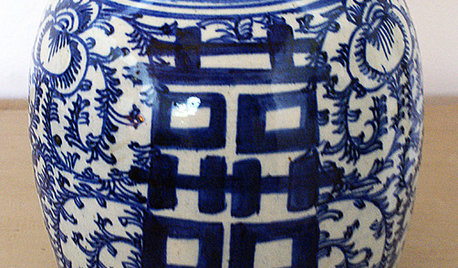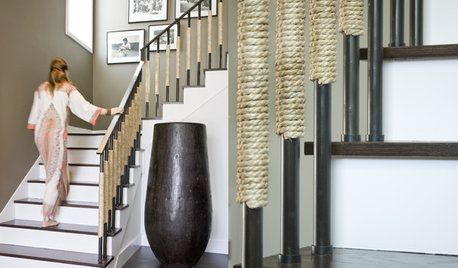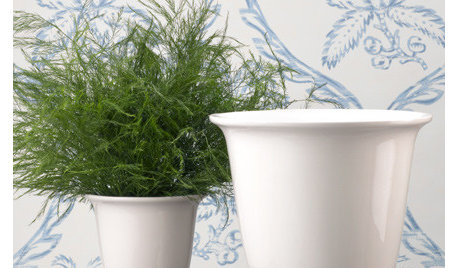Open Vase - Height at which to start vase
glenn_russell
15 years ago
Related Stories

LIGHTINGHow to Turn a Vase Into a Lamp
Fashion a light fixture from that antique or thrift store find, for a one-of-a-kind piece you’ll be proud to display
Full Story
FURNITUREWhich Dining Table Shape Should You Choose?
Rectangular, oval, round or square: Here are ways to choose your dining table shape (or make the most of the one you already have)
Full Story
DECORATING GUIDESRestyle a Vase or Two for Fall
Put a tabletop or shelf in fine autumn form with floral and edible arrangements in perfectly paired containers
Full Story
ACCESSORIESComplete Your Room With a Floor Vase
Large and dramatic floor vases add big impact in a small space
Full Story
White Vases Hold Secret Touch
Rooms missing that designer look? A few white vases on a table, console or shelf can work wonders
Full Story
PRODUCT PICKSGuest Picks: Spring for Fabulous Flower Vases
From jars to egg cups, vintage trophies to urns, there's a beautiful vessel here for every kind of bouquet
Full Story
MY HOUZZMy Houzz: Fresh Start for an Art Collector in Tel Aviv
A homeowner rebuilds to suit her new life and make room for entertaining and creative endeavors
Full Story
HOUZZ TOURSHouzz Tour: New Love and a Fresh Start in a Midcentury Ranch House
A Nashville couple, both interior designers, fall for a neglected 1960 home. Their renovation story has a happy ending
Full Story
DECORATING GUIDESDecorating 101: How to Start a Decorating Project
Before you grab that first paint chip, figure out your needs, your decorating style and what to get rid of
Full Story
HOUSEPLANTSHow to Grow Orchids Indoors
Orchids are the exotic aristocrats of the flower world and can make themselves comfortable in almost any home
Full Story







fruitnut Z7 4500ft SW TX
glenn_russellOriginal Author
Related Professionals
Clemson Landscape Architects & Landscape Designers · South Orange Landscape Architects & Landscape Designers · Athens Landscape Contractors · Centereach Landscape Contractors · Chelmsford Landscape Contractors · Dunwoody Landscape Contractors · Fort Wayne Landscape Contractors · Norristown Landscape Contractors · North Haven Landscape Contractors · Oxnard Landscape Contractors · Raleigh Landscape Contractors · San Benito Landscape Contractors · Waipahu Landscape Contractors · Wilton Landscape Contractors · Hueytown Landscape Contractorsfruitnut Z7 4500ft SW TX
glenn_russellOriginal Author
jellyman
afss
glenn_russellOriginal Author
afss
myk1
glenn_russellOriginal Author
afss
brandon7 TN_zone7
glenn_russellOriginal Author